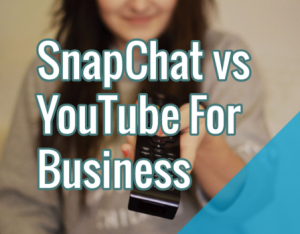How to market your brand using interactive native content — Part 3
In part 3 of a series, contributor Jane Loring explains how interactive native content can go a long way toward educating your audience, building trust and increasing brand awareness.

One of the tech arena’s favorite buzzwords is “disruption.” But while rethinking entire industries is indeed a remarkable achievement, it all begins with educating prospective users to make a behavioral shift. And that is no mean task.
This is the third article in a series covering the use cases of interactive native content. If you missed my previous items, I recommend reading them to learn all about using interactive native content for your brand awareness and growth efforts.
The right place, the right time
One of the more intuitive use cases for native content of all kinds is in delivering relevant content during the information search stage. During this time, readers understand their need for a certain solution, and seek out relevant information upon which to base their purchase. This is when audiences most value brands that provide them with answers in the most efficient, digestible manner. It is market education at its finest, as audiences are actually looking to be educated.

By forming a dialogue with readers through interactive content, brands can gain insights regarding the information that is most relevant to them, and instantly answer that need with great content. A good example would be to ask readers questions via a personality quiz, linking the personalized results of such quiz to an in-depth, interactive, branded article that provides relevant information.
Engage to educate
As brands set out to teach prospective consumers new tricks, they must ask themselves what makes a good teacher. If you’ve ever had to learn anything, you would probably agree that a fun and interesting experience goes a long way. Interactive native content is superior at educating audiences because it is more engaging, immersive and memorable.

Getty Images
When crafting a great interactive item, a brand not only can increase the article’s completion rates, but also can influence the results in real time through smart optimization. If readers respond to some storytelling tools, yet ignore or drop off at others, perhaps it’s time to rearrange the item or event delete a whole section. After all, a great teacher pays attention to the classroom and adjusts accordingly.
Educate to click


It is far easier to activate your audience — even if the investment level is rather high — if you have already established a relationship where users are rewarded for performing certain actions. A brand that initially asked readers to swipe in order to reveal insightful answers, and delivered on their part of the deal, will stand a better chance at asking the same reader to download a new app or make a purchase.

&&Getty Images &&
In conclusion:
-
Interactive native content helps brands educate readers by asking a set of predetermined questions, and providing actionable and insightful answers right away.
-
When prospective customers learn that a brand is capable of predicting their needs, they are more likely to trust the same brand’s ability to solve them, and will be more cooperative in creating the foundation that allows the brand to do so.
-
Trust plays such a crucial part of the brand-audience relationship, and interactive native content has the power to increase it when it matters most.
Some opinions expressed in this article may be those of a guest author and not necessarily Marketing Land.
Marketing Land – Internet Marketing News, Strategies & Tips
(123)
Report Post






